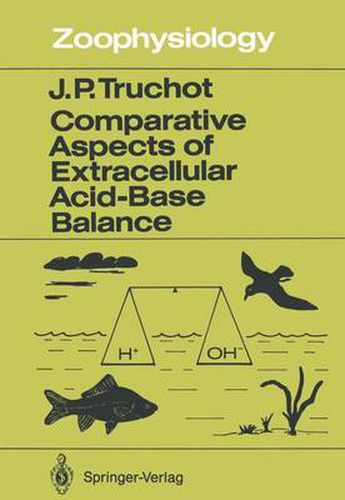Readings Newsletter
Become a Readings Member to make your shopping experience even easier.
Sign in or sign up for free!
You’re not far away from qualifying for FREE standard shipping within Australia
You’ve qualified for FREE standard shipping within Australia
The cart is loading…






This title is printed to order. This book may have been self-published. If so, we cannot guarantee the quality of the content. In the main most books will have gone through the editing process however some may not. We therefore suggest that you be aware of this before ordering this book. If in doubt check either the author or publisher’s details as we are unable to accept any returns unless they are faulty. Please contact us if you have any questions.
Interest in comparative acid-base physiology has considerably grown during last decades even in the absence of major technical or conceptual advances. This is firstly because it has become clear that the extracellular acid-base state reflects the performance of many exchange functions at the organism level: respiration and ventilation of the gas exchange surfaces, metab olism, iono-and osmoregulation. Such functions are much in fluenced by ambient conditions, and the measurement of acid base parameters thus provides useful information about the organism’s responses to environmental challenges. Secondly, many processes at the molecular level are now known to be pH sensitive, and acid-base regulation thus appears to be a major requirement for the functional integrity of cells and organisms. How extracellular acid-base balance can be maintained in a wide variety of animals living in different conditions is the sub ject of this book. The approach is comparative and environ mental throughout. All body fluids share similar buffer proper ties, and common physicochemical principles apply to any acid base system. However, in accord with differing designs and con straints along animal evolution, varying effector organs and mechanisms are at work to maintain an appropriate acid-base state in the organism. Particular emphasis is placed on the fun damental differences between water and air breathers and on the acid-base and respiratory problems arising at the transition from an aquatic to a terrestrial life. Also the complex array of factors influencing the acid-base state in water-dwelling animals is thoroughly discussed.
$9.00 standard shipping within Australia
FREE standard shipping within Australia for orders over $100.00
Express & International shipping calculated at checkout
This title is printed to order. This book may have been self-published. If so, we cannot guarantee the quality of the content. In the main most books will have gone through the editing process however some may not. We therefore suggest that you be aware of this before ordering this book. If in doubt check either the author or publisher’s details as we are unable to accept any returns unless they are faulty. Please contact us if you have any questions.
Interest in comparative acid-base physiology has considerably grown during last decades even in the absence of major technical or conceptual advances. This is firstly because it has become clear that the extracellular acid-base state reflects the performance of many exchange functions at the organism level: respiration and ventilation of the gas exchange surfaces, metab olism, iono-and osmoregulation. Such functions are much in fluenced by ambient conditions, and the measurement of acid base parameters thus provides useful information about the organism’s responses to environmental challenges. Secondly, many processes at the molecular level are now known to be pH sensitive, and acid-base regulation thus appears to be a major requirement for the functional integrity of cells and organisms. How extracellular acid-base balance can be maintained in a wide variety of animals living in different conditions is the sub ject of this book. The approach is comparative and environ mental throughout. All body fluids share similar buffer proper ties, and common physicochemical principles apply to any acid base system. However, in accord with differing designs and con straints along animal evolution, varying effector organs and mechanisms are at work to maintain an appropriate acid-base state in the organism. Particular emphasis is placed on the fun damental differences between water and air breathers and on the acid-base and respiratory problems arising at the transition from an aquatic to a terrestrial life. Also the complex array of factors influencing the acid-base state in water-dwelling animals is thoroughly discussed.